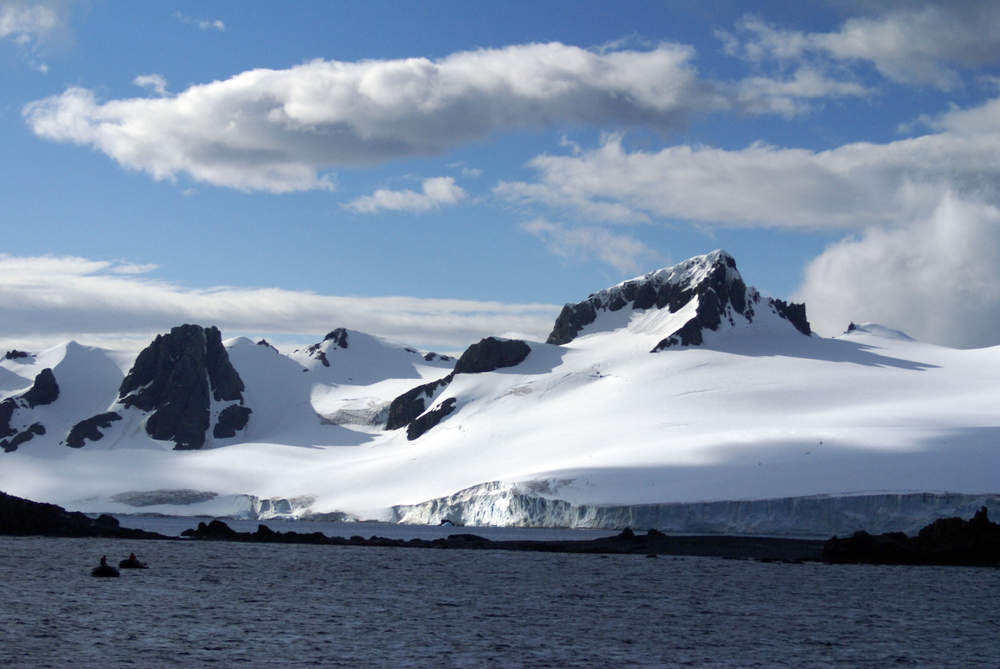
Britain’s pubs are about to get a strange new answer to a classic quiz question: what is Britain’s highest mountain?
Well, it’s not Ben Nevis in Scotland. In fact, Ben Nevis is barely a third as high as Britain’s highest mountain.

Access deeper industry intelligence
Experience unmatched clarity with a single platform that combines unique data, AI, and human expertise.
The answer to the question is based on a semantic technicality.
If one were to ask which is the highest mountain in Britain, Ben Nevis is the correct answer. However, the highest British mountain is actually Mt. Hope in Antarctica.
The new highest mountain in UK territory?
More on the technicalities of how Britain can possibly have its tallest mountain in Antarctica in a moment. But for now, a few facts about Mt. Hope.
Mt. Hope lies near the tip of the Antarctic peninsula, the arm that reaches out towards South America.

US Tariffs are shifting - will you react or anticipate?
Don’t let policy changes catch you off guard. Stay proactive with real-time data and expert analysis.
By GlobalDataIt had previously been thought to be around 3,189m high. However, a new study from the British Antarctic Survey found that this figure was incorrect. It turns out Mt. Hope is actually about 50m higher than was previously thought.
It is 3239m tall, according to the new study. This means that it now outstrips Britain’s previous tallest mountain (also in Antarctica) Mt. Jackson which is only 3,184m.
The new study was undertaken in order to protect planes flying across Antarctica. As there are no roads across the continent, small seaplanes are the only way of getting around.
In addition to resizing mountains, the survey has also literally moved mountains. Some Antarctic mountains have been shifted by up to 5km on maps to make them more accurate.
The study used satellite imagery and also elevation models to work out the heights of Antarctic mountains. The technique is said to be accurate to within a 5m margin of error, so there’s really no question about Mt. Hope’s newfound superiority.
Who owns the Antarctic?
The question which obviously follows this revelation is: how can the highest British mountain be in Antarctica? Well, in 1908, Britain essentially claimed part of the Antarctic. What right did Britain have to claim it? None, really. They just wanted it, so they decided to claim it.
There are seven countries who have claimed parts of Antarctica. These are the United Kingdom, New Zealand, France, Norway, Australia, Chile, and Argentina. The majority of Antarctica is claimed by one of the aforementioned countries. However, while some countries recognise these claims, others do not.
Argentina and Chile, for example, do not recognise the British Antarctic Territory, so for those countries, Mt. Hope will not be the answer to any quiz questions about Britain’s highest mountain.
Technically though, the Antarctic is governed by an international agreement. In 1961 the Antarctic Treaty System was signed by 53 countries. In essence, the treaty promises that Antarctica will be used only for peaceful purposes and scientific research. Military activity on the continent is expressly banned.
The treaty also expresses that no country may make any new claims on Antarctica. However, Peru, Russia, South Africa, and the United States formally reserved the right to make a claim in the future, should they wish to.
Britain’s tallest mountains
While Mt. Hope is (technically) the new highest British mountain, it is far from the only peak on British territory.
Below are the highest British mountains, including those that aren’t actually in the British isles:
1. Mt. Hope, British Antarctic Territory – 3,239m (Britain’s highest mountain.)
2. Mt. Jackson, British Antarctic Territory – 3,184m
3. Mt. Paget, South Georgia and the South Sandwich Isles – 2,935m (The highest mountain under the sovereignity of Britain since the British Antarctic Territory is disputed.)
4. Queen Mary’s Peak, Saint Helena, Ascension and Tristan da Cunhan – 2,062m
5. Ben Nevis, Scotland – 1,344m (The highest mountain in the British isles and the highest mountain in Scotland.)
6. Ben Macdui, Scotland – 1,309m
7. Braeriach, Scotland – 1,296m
8. Cairn Toul, Scotland – 1,291m
9. Sgòr an Lochain Uaine, Scotland – 1,258m
10. Cairn Gorm, Scotland – 1,245m
11. Aonach Beag, Scotland – 1,234m
12. Càrn Mòr Dearg, Scotland – 1,223m
13. Aonach Mòr, Scotland – 1,221m
14. Ben Lawers, Scotland – 1,214m
15. Beinn a’ Bhùird, Scotland – 1,196m
16. Càrn Eige, Scotland – 1183m
17. Beinn Mheadhoin, Scotland – 1,182m
18. Mam Sodhail, Scotland – 1,181m
19. Stob Choire Claurigh, Scotland – 1,177m
20. Ben More, Scotland – 1,174m
21. Ben Avon — Leabaidh an Daimh Bhuidhe, Scotland – 1,171m
22. Stob Binnein, Scotland – 1,165m
23. Beinn Bhrotain, Scotland – 1,157m
24. Derry Cairngorm, Scotland – 1,155m
25. Lochnagar, Scotland – 1,155m
Honourable mentions:
58. Mt. Snowdon – 1,085m (The highest mountain in Wales.)
98. Carrauntoohil – 1,038m (The highest mountain in Ireland.)
176. Scarfell Pike – 978m (The highest mountain in England.)
277. Soufrière Hills, Monserrat – 915m (The highest mountain in the British Overseas Territory of Monserrat)
398. Slieve Donard – 850m (The highest mountain in Northern Ireland.)
Suffice to say, if a British person really wants to see huge peaks without travelling the world, Scotland is the place to go. In fact, the top 57 of the highest mountains in the British isles are all in Scotland.
Still, all this pales in comparison to some of the other large peaks of the world. For example, the world’s tallest mountain, Mt. Everest is 8,848m. You’d have to stack the top seven highest mountains in the British Isles on top of each other to reach its heights.
So, sure, while Britain might have gained a new highest peak, it’s still not even close to the highest peaks in the world…







